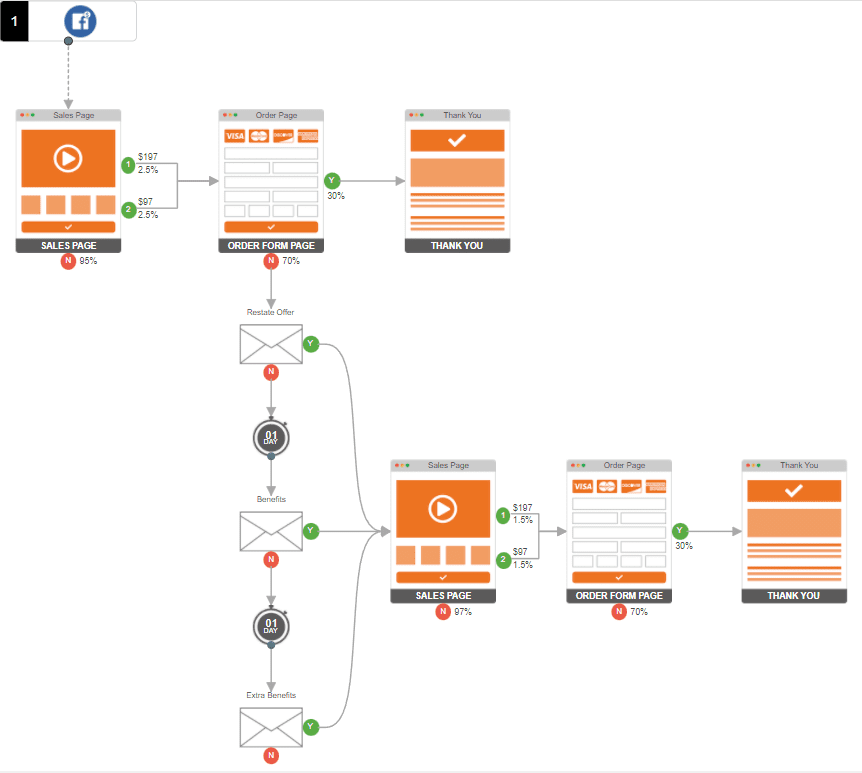Making Sense of All of These Marketing Frameworks
It's pretty confusing out in the marketing world. There are so many different terms and expressions used to describe marketing systems and activities - but we have found that they are not used uniformly.
So, how do we make sense of all of them? At Asymmetric, we have created an engine that drives growth for our clients. This engine uses several frameworks that are tightly connected. Hopefully, you'll find it helpful.
The Customer Journey
The customer journey is a simple way of thinking about what the customer is thinking and doing along the way towards sending you their hard-earned money.

This is a pretty blunt tool and it isn't very useful for making decisions about marketing, but it works pretty well as a tool for segmenting prospects and customers into groups of people who are at a similar state.
The Purchase Path
The Purchase Path is a framework that combines people, places, occasions, and events, as well as psychological "need-states" and activities. It works well as the foundation for building campaigns and sales funnels.

The Purchase Path is my favorite framework because it brings attitudes, moods, needs, emotions, and aspirations into the conversation. The Customer Journey and the Sales Hourglass are pretty internally-oriented frameworks that are rather dry and unemotional. The Path to Purchase brings out those psychological elements in a visual model that is very helpful in designing sales and marketing campaigns.
The Sales Hourglass
This framework runs alongside the Customer Journey and Path to Purchase as an internal tool for categorizing prospects and customers for purposes of making sales-related decisions.

It is easy to imagine how your sales team can use this framework. It helps decide what type of material to send to the client, what the message should be, how ready they are to receive an offer, and how we can forecast the revenue of the organization.
These segments are often used in CRM tools like Salesforce or HubSpot as "stages." It is very important that the sales team is able to accurately segment prospects and customers into the appropriate stage based upon pre-established criteria.
The Flywheel
The flywheel diagram illustrates the concept that, when employed properly, marketing programs can create momentum and generate a virtuous cycle whereby every activity makes the next step more powerful and valuable.
Connecting the Frameworks
Each of these four frameworks can be connected in a logical fashion. For example, a prospect that is just discovering a problem that is generating a need would fit as follows:
Customer Journey - Awareness
Purchase Path - Problem
Sales Hourglass - Prospect
Flywheel - Attract
As the prospect advances and begins searching for solutions and comparing options, they would move simultaneously to new stages in each framework:
Customer Journey - Consideration
Purchase Path - Consider Value
Sales Hourglass - MQL (Marketing Qualified Lead)
Flywheel - Engage
Now What? Sales Funnels
For every stage and combination of stages that one of our prospects or customers is in, we can create one or more Sales Funnels. These Sales Funnels are designed to pull the prospect along to the next stage and, ultimately, to turn them into revenue-generating customers.
Here is an example of a simple sales funnel:

The Sales Funnel uses a variety of marketing tools to engage with the prospect to help them make the decision to purchase one of our products in order to solve their problem, fill their need, or fulfill their aspiration (as the case may be).
Bringing it All Together
Designing and implementing sales and marketing frameworks such as these for your organization can help you:
- Have a common language and a common understanding of the process.
- Use common terms in CRMs and other tools.
- Ensure that marketing campaigns are aligned using harmonized messaging.
- More accurately forecast future sales.
- Capture the full Lifetime Value of a customer.
- Provide guidance to marketing people as they build programs and campaigns.
Ultimately, the purpose of marketing is to generate the maximum amount of value from a customer by delivering the right message, at the right time, and in the right place, in order to fulfill that customer's needs.
These frameworks are excellent tools to help guide you towards success.
Use Marketing Frameworks in Your Business
Asymmetric, led by former Army Delta Force operator and corporate executive, Mark Hope, can help you implement these ideas in your business. You can contact Mark by email at mark.hope@asymmetric.pro, or by telephone at +1 866-389-4746, or you can schedule a complimentary strategy discussion by clicking here. You can read all of his articles on Medium.


Mark Hope
Mark A. Hope is the founder and CEO of Asymmetric Marketing – a unique agency specializing in building high-performing sales and marketing systems, campaigns, processes, and strategies for small businesses. Asymmetric has extensive experience with organizations across many industry segments. If you would like some help in implementing ideas like these in this article, feel free to give Mark a call at 844-494-6903 or by email at mark.hope@asymmetric.pro.

